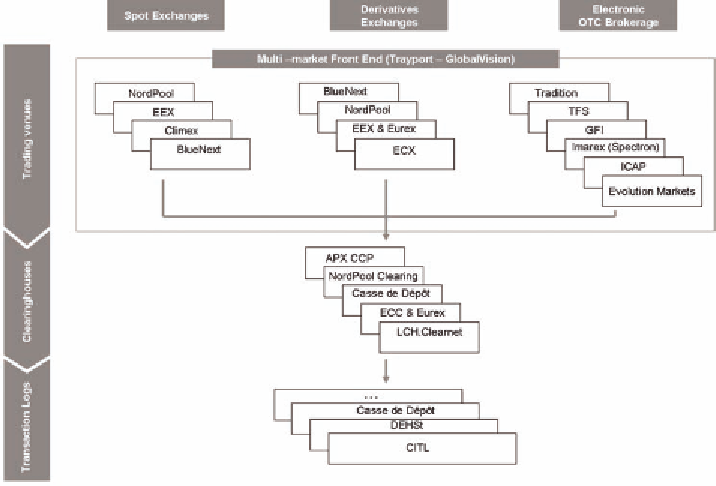Environmental Engineering Reference
In-Depth Information
Figure 6. Secondary market architecture of the EU ETS
SECONDARY MARKET
FUNCTIONING
the IDB venues are the most diversified. They
essentially offer any product class from oil, coal,
gas, electricity, freight to emissions. In contrast
to exchanges they also arrange trades in bespoke
and structured instruments.
Vertically, it covers the whole value chain
spanning from trading to clearing and, finally, to
settlement and account keeping. Again, most of
the entities offer multiple product classes and,
hence, can offer cost-efficient transacting across
product classes. Clearinghouse services are offered
for futures and options only but not for structured
instruments.
Finally, trading in European energy markets
including emissions reveals a distinctive feature.
There is a common market front end provided by
a firm called Trayport which virtually aggregates
liquidity in all instruments across different venues.
Figuratively, there is one screen where a trader
can trade any instrument and market across all
energy related product classes.
In the following we look at some characteristics
of emissions trading markets under the EU ETS.
We aim at challenging the robustness of the price
discovery function and the reliability of some
characteristic pricing relations in secondary
market trading. In this respect, we look at the
development and variability of prices, returns
and daily volumes - in both on and off-exchange
trading. We also look at the interconnectedness
of emissions markets by exemplifying some price
relations between spot and derivatives markets as
well as between power and emissions derivatives
contracts. The variability of returns and pricing
relations highlighted in the following sample of
observations is of particular relevance for our
later considerations on the design of large-scale
primary market auctioning.

